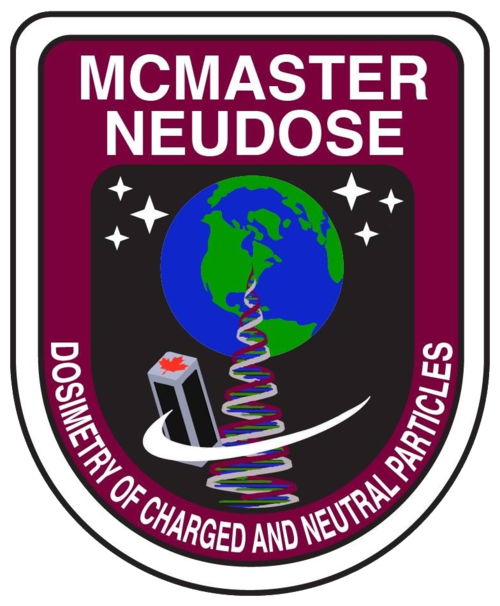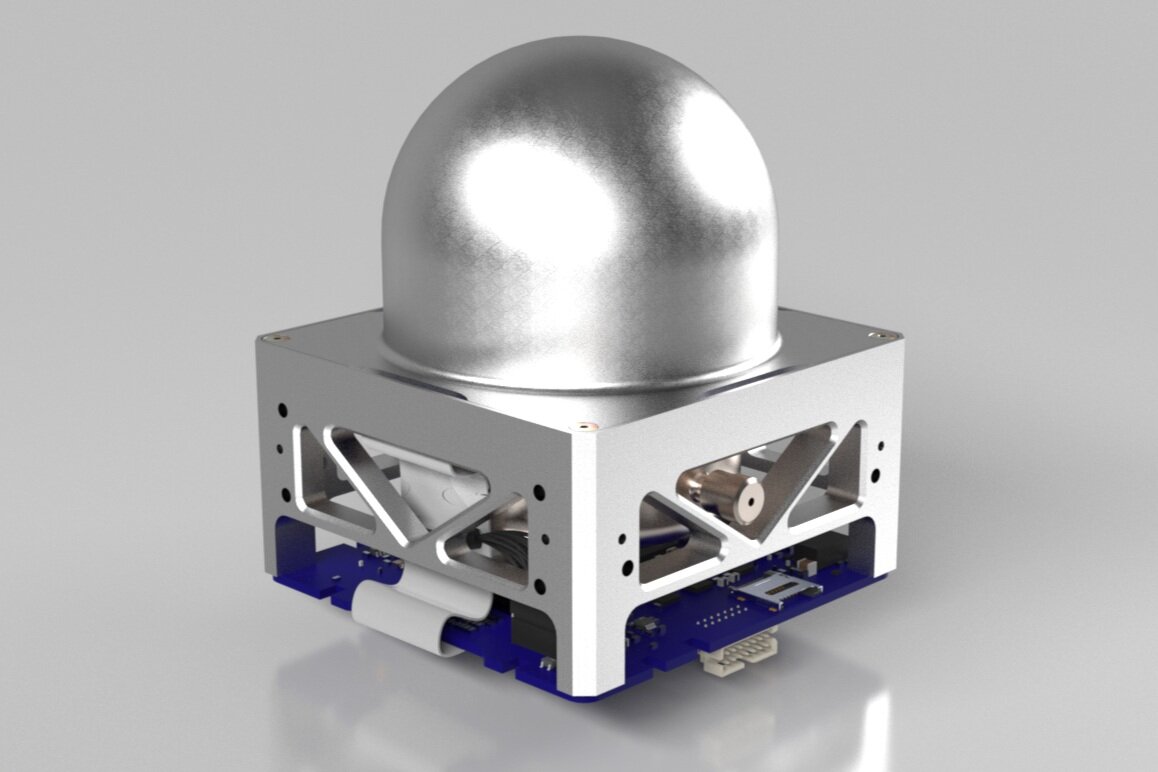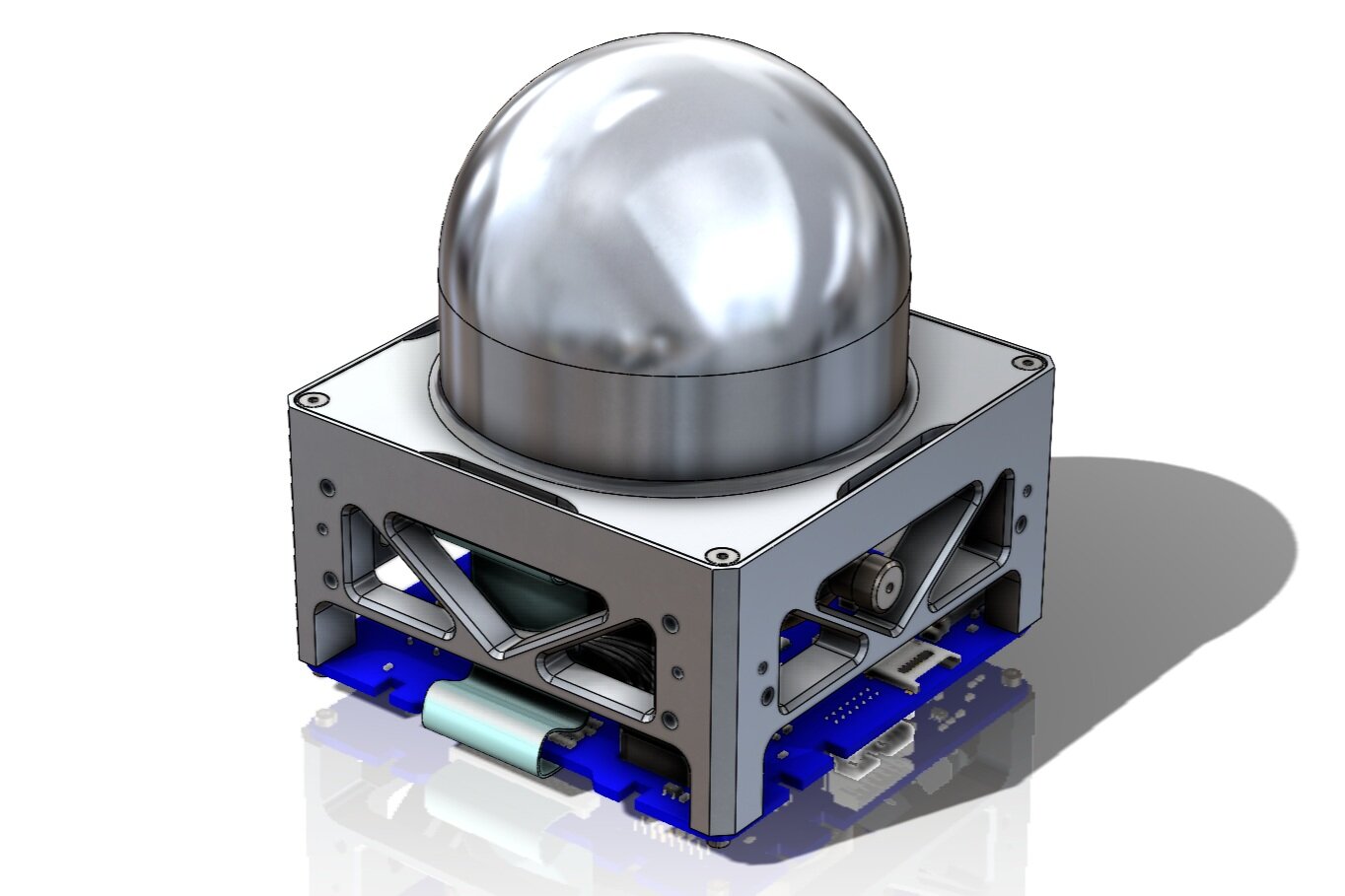What is the McMaster Interdisciplinary Satellite Team (MIST)?
The McMaster Interdisciplinary Satellite Team is a group of McMaster University students that is currently designing, fabricating, and planning to launch a small satellite (CubeSat) into low earth orbit in order to study the effects of ionizing radiation on the human body. A project of this magnitude offers a brand new learning opportunity as this newly developed project will give students an opportunity to enhance their academic experiences through experiential learning. The students on this team are actively participating in every step of the process, from designing, modelling and launching, and this will truly be an enriching educational experience. MIST will provide students with an enhanced learning opportunity and a unique skillset that will supplement the academic fundamentals provided through their education at McMaster University.
What is the motivation behind the NEUDOSE mission?
Recent advancements in space technology have resulted in space exploration becoming a rapidly growing field, and the desire for human space exploration is drastically increasing. Previous manned missions include flights to Low Earth Orbit (LEO), such as to the International Space Station (ISS), however upcoming flights are planned to go beyond LEO, such as to asteroids and eventually Mars. A major consideration in such missions is that the space environment is significantly different from that of Earth, especially with respect to the radiation environment. This drastic difference results in concerns regarding radiation dose.
Space radiation is distinct from naturally occurring forms of radiation on Earth, and significant health risks are associated with long term exposure including cancer, cataracts, central nervous system damage, acute radiation sickness, and hereditary effects. Consequently, the fulfillment of the intended exploration goals of each mission must be carefully managed without exceeding an acceptable level of risk from exposure to space radiation. Therefore, there exists a need for radiation detection systems that are able to classify and characterize the radiological hazards present.
The NEUtron DOSimetry & Exploration (NEUDOSE) mission aims to further our understanding of long-term exposure to space radiation by investigating how charged and neutral particles contribute to the human equivalent dose during LEO missions. This project aims to:
Develop a Charged & Neutral Particle Tissue Equivalent Proportional Counter (CNP-TEPC) that allows for the discrimination of dose from charged and neutral particles (images to the right).
Map the contribution to in vivo doses from charged and neutral particles in LEO.
Provide hands-on training for McMaster University Undergraduate students in small satellite design platforms.
Provide opportunities for McMaster University students to gain valuable and employable skills in project design as well as mission management and implementation.
Sub-Teams
Our team consists of many sub-teams which specialize in different facets of science, engineering, and project management.
Click the team name to reveal more information about their function.
> CDH
The central purpose of NEUDOSE is to collect and transmit payload data while simultaneously managing the limited resources available. As the brain of the satellite, the CDH team ensures these resources are managed properly and that the satellite functions coherently and autonomously. An OBC is therefore required to to meet the following responsibilities:
- Providing a communication bus between all subsystems.
- Maintaining accurate time stamps of transmitted data so it may be properly analyzed.
- Managing CDH's own state and the states of other subsystems.
- Monitoring the health of each satellite subsystem.
- Collection and storage of scientific, telemetry and state information.
Surviving the harsh environment of LEO (Low Earth Orbit).
> Orbital
Control of spacecraft attitude is often required for accurate pointing of the science payload and antennas for radio down/uplink. For the McMaster NEUDOSE Mission, active pointing is not a requirement and therefore, we do not need an active ADCS system. However, a passive control system will be utilized to constrain the attitude of the CubeSat for the sake of improved downlink capabilities. The satellite will use a passive magnetic stabilization system consisting of permanent magents and hysteresis rods. The team also conducts case studies regarding physical phenomena the satellite experiences throughout its orbit.
> Operations
The Operations Team is responsible for management of internal and external communications for the NEUDOSE team. Our focus is on maintaining a strong social media presence, running events to share our love for space with the McMaster community, and ensuring that the team has what they need for a successful launch. We are also responsible for the recruitment, onboarding, and offboarding of all team members.
Click here to get to know more about Operations.
> Communications
The retrieval of the scientific data generated on-board the satellite while in LEO is critical for mission success. This is the key role of the COMM system. COMM is the backbone of establishing and maintaining a communication link between the NEUDOSE team located on Earth and the scientific payload in space. A communication link allows for the wireless transfer of data through the use of electromagnetic waves, specifically in the radio and microwave frequency bands. Establishing this link allows for three key opportunities:
- The data generated from the science payload can be obtained and analyzed
- The information regarding the satellite system health (i.e. satellite telemetry data) and each sub-system can be monitored
- The satellite operations can be changed/updated during each orbit cycle through telecommand
- A typical communication link is sometimes referred to as a satellite link. It can be realized using a radio transceiver and antenna located on-board the satellite to broadcast and receive the radiofrequency signals. On Earth, there will be a similar radio transceiver and antenna located in a Ground Station which will transmit and receive signals to the satellite. Therefore, COMM can be broken down into:
- Satellite Communication
- Ground Station
> Mechanical
The Mechanical team is comprised of the Structural and Thermal teams. The Structural team is mainly responsible for the design, manufacturing, and testing of the mechanical structure of the satellite in accordance with guidelines specified by the Canadian Space Agency and NanoRacks. The team must also successfully integrate the deployment switches, payload, and all internal hardware with the mechanical structure. The Thermal team is responsible for simulating the satellite in LEO, identifying areas of concern that are mission critical, and designing solutions to mitigate failure. The team is also responsible for the thermal testing of the engineering and flight models of the satellite to ensure that the integrated satellite is space flight ready.
Click here to get to know more about Mechanical.
> Mission Operations and Control
In order to facilitate command operations and data collection from local and remote ground station(s), the team requires a centralized computing environment. MOC will manage an electronic server environment consisting of one or more physical or virtual servers. The server(s) will act as the electronic command center for the mission. During flight, MOC servers shall have two high priority tasks:
- Facilitate remote command and control operations for the ground station(s) and satellite.
- Receive, parse and store experimental data and telemetry from the ground station(s).
> EPS (Electrical Power System)
A fundamental aspect of every space mission is the generation and management of on-board electrical power. The EPS must generate, store, and distribute adequate power for all electrical systems on the satellite. This includes ensuring a stable power supply throughout the lifetime of the mission and monitoring consumption and state to ensure continued operation as well as completion of tasks crucial for the mission. The EPS is considered in three segments:
- Solar arrays and constituent cells used for power generation.
- Batteries to store power.
- The motherboard which handles power conditioning, distribution, and monitoring.
> Payload
The scientific payload is a novel radiation detecting instrument developed to separately measure the interactions of charged particles and neutrons in low Earth orbit. This data will be used to determine the human tissue equivalent dosages. Using two radiation detectors, a Tissue Equivalent Proportional Counter (TEPC) and an Anti-Coincidence Detector (ACD), charged particle and neutron interactions can be separated. The payload subsystem is broken down into 5 subcomponents:
- Dose Cavity (contains the TE sphere)
- Pressure Vessel
- Charged and Neutral Particle Tissue Equivalent Proportional Counter
- Subsystem Assembly
Data Acquisition Module (DAM)
McMaster NEUDOSE
1280 Main St. W.
Hamilton, ON
L8S 4L8
@neudose on Twitter
@mcmastersatellite on Instagram
McMaster NEUDOSE on Facebook




